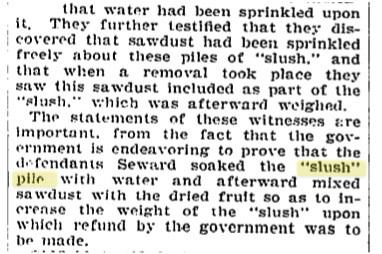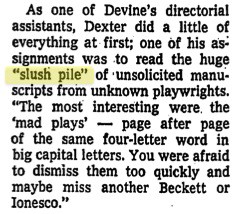'Predators': Horror Chick on ‘Predators’ and the Death of Hope
‘Predators’: Horror Chick on ‘Predators’ and the Death of Hope

Those of us who were moviegoers in 1987 have a very soft spot in our heart for Predator, the magnificent dual-governor-to-be casted scifi-horror-monster flick. Today, two Predator fans take a look at the sequel, the imaginatively titled Predators. First up, horror connoisseur Melissa Lafsky.
There’s a danger inherent in getting too close to something you love. In the background lurks a brutal threat, where the joy can be vacuumed from the object of your affection, and the empty space filled with a boiling cynical goo. Think figure skating-get too involved in the sport, and the unfiltered awe of grace and human artistry can erode away, till you’re left with nothing but the thought that 14-year-old Svetlana Smirnovleninskaya’s misplaced toepick will mean an automatic .0001 point deduction, which will no doubt be ramped up to .001 by the Estonian judge with the pulsating chin mole and E-cup breasts.
For film reviewers, these cynical blips perch on the sidelines, waiting for a slit to open in the fabric of your movie enjoyment so they can slide in, banish the joy, and take over your inner dialogue. The second you’re sucked out of the Blissful Movie Universe by some bit of crappy writing or sloppy editing, it’s all over. The next 90 minutes will be lost to a series of raptorial thoughts that consume your mind, and leave you a crusty shell of a horror fan.
Like so:
“Ok, so ‘Predators.’ Here we go. Please Christ let this be even a fraction as good as the original. Hold on, wait, so your big opener is Wladyslaw Szpilman falling from the sky? Ah yes, since 5 minutes of parachuting is a perfect replacement for actual dialogue. Instant Oscar nod for Adrien Brody’s trainer. Shit. This is bad already. So, so bad. What’s the total run-time? Jesus, I’m in for another 106 minutes of this? If there are bedbugs in this theater, I’m suing for worker’s comp. Oh look, and apparently Topher Grace is now a permanent staple on the B-movie casting roster. Is shooting Danny Trejo in the back what passes for character development? This fecund crap can’t have been done by Robert Rodriguez, unless he’s started freebasing meth off Rose McGowan’s ass. Oh wait, it’s not Rodriguez, he just produced. ‘Directed by Nimród Antal,’ whoever the fuck that is. Check production notes: Past films include such gems as ‘Vacancy’ and ‘Armored.’ Aaand after this shitshow Rodriguez will never take another of his calls. Jesus, 30 full minutes before we even SEE a Predator? Can we perhaps pretend to have a plot that makes any semblance of sequential sense? And what production scout thought this Detroit cul-de-sac looked like a jungle? That intergalactic death-ray just emerged from a monocultural topiary. I wonder if this’ll even break $20 mil opening weekend. Might need more than 2,700 screens. Gun-point ticket sales, the latest Hollywood trend? Here witness the fall of Adrien Brody — from ‘Splice’ to this. His dramatic transformation from emasculated scientist to special-ops badass appears to consist of gaining 20 pounds of muscle and delivering every line through a mouthful of saliva. Oh TELL me some L.A. script doctor didn’t actually think ‘I’m gonna rape me some fine bitches’ would be the tagline replacement for ‘I ain’t got time to bleed.’ Please please tell me that, so I can sleep tonight without clawing my face over the fact that some asshole is paying for his Malibu home renovations with the studio check from this irredeemable clownshow. Oh look! The Danse Macabre of Laurence Fishburne’s career! From ashes to nonsensical creature films, dust to dust. People are laughing. And sighing audibly. The dude next to me is sexting some underage co-ed. Apparently she’s got a ‘tasty vag.’ How dare they do this to us. We who adored and fetishized the original! We who still bookend every conversation about Big Arnold with a mention of ‘GET TO DA CHOPPER!!!’ Come on, Nimród, can’t you even pretend to care?? Don’t you know that ‘Predator’ was more than just an ‘elevated B-movie’??? That it was a CREATURE FILM CLASSIC!? That you have a RESPONSIBILITY when ‘rebooting’ the whole franchise to not REDUCE it to the rampant suckery of ‘Alien v. Predator’!?! Don’t you people GET IT?!?! Don’t you even CARE!?!?! NO!?!?! THEN FUCK YOU, NIMRÓD, WITH YOUR STRAIGHT-TO-DVD RESUMÉ AND YOUR FUCKING ACCENT AIGU!! FUCK YOU, RODRIGUEZ, WHO COULDN’T BE BOTHERED TO WATCH THE DAILIES IN BETWEEN BANGING WANNABE STARLETS AND KISSING DENIRO’S ASS SO HE’LL DO A CAMEO IN ‘MACHETE’!!! FUCK YOU McTIERNAN, FOR MAKING THE ORIGINAL SO GOOD THAT NOW WE CAN ONLY STARE IN THE FACE OF ALL THAT WE LACK!!!! MAKE IT STOP!!! CANNOT BREATHE!!! AM DROWNING IN THE VISCOUS SLIME OF HORROR MEDIOCRITY!!! WHY DO I EVEN BOTHER AAAAAAGGGGGHHHHHH!!!”
And then come the credits. Think it’s too late to catch the midnight screening of ‘Twilight?’”
Melissa Lafsky is still pissed off.
Duct Tape Fix Necessary for iPhone 4

Oooh, Consumer Reports has issued its verdict on the iPhone: do not buy. Also? “The tests also indicate that AT&T;’s network might not be the primary suspect in the iPhone 4’s much-reported signal woes.” They do however recommend a good fix for your iPhone 4. It involves duct tape.
Pay Attention!
Stop what you’re doing and take this test, I’ll wait.
So, how’d you do? Even if you knew about the “invisible gorilla” (famous from a similar test on focus and attention from a decade ago), did you catch the other oddities? Or do you have inattentional blindness? “A lot of people seem to take the message of our original gorilla study to be that people don’t pay enough attention to what is happening around them, and that by paying more attention and ‘expecting the unexpected,’ we will be able to notice anything important,” says psychologist Daniel Simons, co-author of both studies. “The new experiment shows that even when people know that they are doing a task in which an unexpected thing might happen, that doesn’t suddenly help them notice other unexpected things.” Fair enough. Next time I spot an invisible gorilla I am totally going to remind myself that other things may be happening as well.
Very Recent History: The "Slush Pile"
by Jane Hu

According to the OED, the first occurrence of “slush pile” was not in reference to what we commonly now know as unsolicited manuscripts from unheard-of (and often insane) aspiring authors. It appeared in January 1907, when the Washington Post published an article accusing J.H. Seward & Co. “of fraudulently obtaining refunds of customs on fruits imported into this country.” Apparently, when government inspected the piles of “waste fruit”-or “slush”-they found….

Alright, so that’s not exactly the slush pile we’re familiar with today. Nonetheless, the Post’s use of “‘slush’ pile” does play into the semiotics of the publisher’s slush pile too. Contemporary uses of the term frequently involve “sifting,” “mining,” and “panning” through mountains of poor prose for “gems” and “gold.” In all cases, searching through slush piles is a process of inspection and refining. By describing its vegetative slush as containing elements of differing consistencies, the article already points to this filtering process of “waste fruit,” soaked in water and subsequently mixed with sawdust. Just about as tempting as flipping through thousands of rotten manuscripts?
Taking a more direct line, editor and anthologist John Joseph Adams suggests that “slush pile” might have something to do with how manuscripts used to be hand-delivered and tossed over office transoms when the press was closed. When the editors returned, they would then have to wade through piles of manuscripts, just like trekking through mounds of “slushy snow.” Sounds… reasonable?
But, the OED’s earliest listing of “slush pile” in the context of would-be novelists occurs in a 1952 Berkshire Evening Eagle article regarding humor writer Mary Lasswell. The piece quotes Lasswell saying “that when ‘Suds [in Your Eye]’ went into the slush pile at Houghton Mifflin they wouldn’t believe it was a first novel.” Because writers, even now, often provide definitions of “slush pile,” the ease with which Laswell employs the phrase sounds a little too casual, not like a neologism at all.
Uncertain about the primacy of the OED’s findings, I took time to sift through my own pile of documents. Although the Encyclopedia Britannica’s entry on “Publishing” aptly describes the role of a publisher’s reader (an assistant who mines through slush piles for so-called gold) as early as 1911, they never actually use the term itself. And only in 1967, much later than the Evening Eagle, does the New York Times first mention “slush pile,” in an article on director John Dexter.

Indeed, like most neologisms, “slush pile” seems to have originated in colloquial speech instead of print; even its textual debut in the Times occurs hesitantly between quotations.
And, as is also the case with many neologisms, “slush pile” maintains an organic poetry. “Slush” can also mean “Rubbishy discourse or literature…nonsense, drivel.” Mark Twain frequently employed the word in just this sense. In his semi-autobiographical Innocents Abroad, Twain’s usage of “slush” shares affinities with its modern definition as unpublished drivel.

Much like Twain’s speaker, readers of slush piles are far from sympathetic critics. Likewise, a 1896 Daily News piece cites an American editor dismissing “Two stout volumes of…‘delirious slush.’” In his 1919 book Score by Innings, sports writer Charles E. Van Loan describes “A woman reporter [who] came to the hotel in Chicago, took one peek at Conley-I’ll swear the kid never said ten words to her-and tore off a whole page of slush.” Returning to its textual inception in the Post, slush here also contains connotations of prevarication and amorality. For Van Loan’s “reporter,” slush equals haphazardly whipped-up fiction. Sound familiar?
At this point, I was feeling like a floundering wordwatcher out of Steven Pinker book, so I turned for help to linguist Charles Boberg. Boberg suggested that “slush pile” developed by analogy with “slush fund,” since both pertain to reserves of otherwise unassigned and (temporarily) unneeded resources. Of course, such repositories may hold future value: one can dip into a slush fund just as an editor might resort to slush piles. Further, “slush fund” derives from (yet another!) meaning of “slush”: the leftover oil and fat from the cooking that went onto ship galleys. Apparently, the slush fund was the money collected from the sale of the ship’s greasy slush, which was distributed among the officers as a “bonus” (the reason and purpose of this is still unclear… perhaps a topic for later!).
Boberg suggests that from this comes “the slightly corrupt connotation of modern ‘slush funds’: not only money held in reserve, but money that can be used for unbudgeted expenses, including, possibly the bribing of officials.”
Talk about earning a bad name for yourself. “Slush pile” is loaded with numerous shady insinuations. From the Post’s first deployment of “slush pile” to Van Loan’s unethical reporter and ship slush emerges the foul and mercenary undertones that resonate into our modern use of “slush pile.” One does often associate slush piles with the trash bin. Is that where J.H. Seward & Co.’s rotten sawdust fruit should have gone? How about leftover cooking fat? Or irresponsible journalism? Apparently not. Just ask fans of John Ashbery, Philip Roth, Harry Potter and Twilight, slush pile rescuees all.
Jane Hu is an Awl summer intern whose beat is hanging out in libraries.
Photo, of the slush pile at Tor books, by Martin Sutherland from Flickr.
Timmy The Tortoise Finds A Friend
“He nuzzles and kisses her, moves her around and pushes lettuce towards her. He plays with her every day. If I want him to go into his hut at night time I have to put Tanya in there first, otherwise he won’t go.”
-It’s the heartwarming story of Timmy the tortoise, an abandoned 60-year old Testudo hermanni who, after being bullied by other tortoises at the shelter he now calls home, found true tortoise love with Tanya, a molded tortoise toy for whom he fetches food and offers affection. Try not to think too much about the details of this one lest you alight upon the phrase “plastic tortoise fuck doll.” Just enjoy the magic.
The Bridge to Somewhere

There’s a reason that the notion of selling the Brooklyn Bridge has long served as shorthand for a rudimentary con job. Public authorities own and administer the span, and so documents decreeing private ownership of the thing are so plainly the handiwork of a scam artist that they’ve basically been retired from circulation as anything other than a Vaudeville-era punch line.
But greed and vanity reliably trump reason on the American scene, and so the current dust-up over the Ambassador Bridge, which links Detroit and Windsor, Ontario, has the point of the bridge-selling parable precisely backwards. As the main artery for trade between the United States and Canada, the Ambassador is the most heavily traveled bridge in North America, with nine million vehicles fording it each year. It’s also the exclusive property of Michigan trucking mogul Manuel “Matty” Moroun, who scooped it up in 1979, two years after the death of its original private developer, Joseph Bower.
The only problem with this arrangement is that the 81-year-old structure is falling apart, its four rickety lanes clogging and crumbling under the weight of one-fourth of the commercial traffic between Canada and the United States. And now the godless welfare state known as Canada has come forward with a proposed loan of $550 million to the recession-battered state of Michigan to fund a new bridge project two miles down river from the Ambassador.
The plan, which would permit the state to repay the loan from future toll revenues, promptly won the backing of many leading Michigan businesses-chiefly the auto industry, which feeds off a steady stream of Canadian-shipped auto parts — and public officials, from Gov. Jennifer Granholm to Detroit Mayor Dave Bing.
But as CNNMoney correspondent Julie Halpert notes, Moroun is doing everything in his power to stand athwart the public-private partnership that would erect the $2.6 billion new structure. Moroun has proposed erecting his own cheaper six-lane span for between $450 and $500 million, right next to the Ambassador, and converting the older bridge to back-up duty when vehicles lack access to the neighboring structure.
Backers of the rival project-called the Detroit River International Crossing-say that adjoining bridges wouldn’t afford a workable means of siphoning off excess traffic, particularly in the scenario of a terrorist attack that could take out both structures at once.
And now the Michigan legislature’s trying to sort the whole thing out. The state House of Representatives has endorsed the Canuck proposal, with the Senate now preparing to weigh in-and the GOP-controlled chamber is showing early signs that it will do the bidding of Moroun, who is by sheerest coincidence a major Republican donor from way back.
Even so, if the upper chamber signs on with the Moroun plan, it’ll have its hands full trying to piece a coherent argument together. Moroun and his son Matt, who helps run the family’s Detroit International Bridge Company, maintain that projected Detroit-Windsor traffic won’t sustain a second bridge, leaving taxpayers on the hook for tollway shortfalls. Out of the other side of its mouth, meanwhile, their company has filed suit against the Canuck project, alleging that traffic on the new bridge would be so robust as to represent unfair competition with the privately held span-a crassly opportunistic echo of the free-market-for-thee-but-not-for-me position private insurers adopted to smite down a public option during the health-care debate.
But the richest (if you will) complaint that the Morouns brought in the suit is a classic bit of courtroom Astroturfing: the allegation that the Federal Highway Authority “neglected to address environmental justice issues related to the new bridge’s effect on the low-income, minority Delray neighborhood of Southwest Detroit.”
The Delray community, you see, also abuts the Michigan end of the Ambassador Bridge, and under the Moroun empire’s watchful eye, it has already become something of a capital for environmental-justice lawsuits. And it’s not as though Moroun hasn’t had plenty of opportunities himself to upgrade the blighted area-according to the Detroit Free-Press’s tally, he owns 625 properties throughout the city, including Southwest Detroit’s landmark Michigan Central Depot, a long-abandoned and dilapidated architectural gem that’s come to symbolize Detroit’s slide into post-industrial squalor. So far, though, Moroun has confined his civic activism to bankrolling recall petitions against state Rep. Rashida Tlaib, Southwest Detroit’s most prominent backer of the public DRIC plan-all firmly rejected for overbroad wording and unsupported claims against the lawmaker.
At least the mogul is admirably consistent in his will-to-privatize. In February, a a Michigan judge ordered him to demolish toll booths and a duty-free store and gas pumps he’d erected on land that actually belonged to the city of Detroit. And like any plucky seeker of the main chance, Moroun is none-too-punctilious about embracing the iron hand of federal authority when it suits his interest: The U.S. government has filed a cease-and-desist order forbidding Moroun from dubbing the Ambassador a “federal instrumentality.” As the Windsor Star drily notes, “the bridge owner has used the moniker frequently for years after obtaining a state ruling that allowed him the right to take over city lands in Detroit and gain immunity from regulations.”
But now, of course, with no real percentage in fed-impersonating, Moroun and his allies have moved confidently into Tea Partyish denunciations of the federal leviathan. His wife Nora, for instance, has publicly denounced the DRIC project as dagger poised at the heart of “the American dream”-you know, the constitutionally protected right of every freeholder to erect a private transportation monopoly, scoop up speculative slum-lord parcels by the hundreds, and pursue optimal rent-seeking arrangements, legal or otherwise. Son Matt, meanwhile, gives the standard Randian gloss on the battle: “We’re doing our best to fight a government takeover of a private business that wants to spend private dollars in Detroit.”
Indeed, support for a privatized transportation infrastructure has long been a virtual litmus test for today’s fire-breathing libertarian true believer, even though the profit motive has proven a laughably poor means [PDF] of securing basic public goods such as road maintenance and safety. (To get a taste of the exciting, fatality-heavy frontier of privatized roadways, just consult the deadly legacy of deregulation in Moroun’s own trucking industry.)
One might reasonably hope that Moroun’s antics could become the public face of this dim free-market reverie, and it could pass into the same of annals of half-comical scamming where the deals to buy the Brooklyn Bridge are interred. But the only jokes on offer in our latter-day market order are on places like Southwest Detroit, and the idea of sustaining any legitimate public interest in public goods. And they’re getting less goddamn funny all the time.
Chris Lehmann won’t be going forth anytime soon.
Archive postcard photo (date unknown) from Brandon Bartoszek’s Flickr.
Harvey Pekar, 1939-2010
Another tough blow for Cleveland: The great comic book writer Harvey Pekar has died. Pekar, who was portrayed by Paul Giamatti in the film based on his long-running series American Splendor, was also able to claim one of television’s most uncomfortable moments when he badgered David Letterman about then-NBC owner General Electric’s corporate malfeasance. Pekar was 70.
America Decides It's Okay With Its Mammoth Buttocks

Hot for summer: gigantic asses! Or so claims the Daily News, which pays tribute to a bevvy of amply backsided celebrities and provides historical context by offering a perhaps inevitable nod to our culture’s greatest proponent of the colossal derriere (“Not since Sir Mix-a-Lot’s 1992 hit ‘Baby Got Back’ has so much praise been paid to the posterior”). Also making news on the expanding rump front: American hindquarters have become so engorged over the last half century that theaters across the country are undergoing renovations to cope with the burgeoning spread. “Americans have gotten taller and heavier, and as expectations for accessibility, comfort, and amenities have changed, seat spacing and auditorium size has increased,” reports a theater-development firm, which is a nice way of saying that when we sit around on our mammoth bottoms we want those bottoms to have plenty of cushion to accommodate our extra, uh, cushion. Asses! They are everywhere.
A Trip to Cuba

“Nobody seemed to understand the concept of depression-possibly a good thing-or what a burrito was. Were they allowed to leave the country? Some visited Miami every other month. Others said they couldn’t leave their province. They certainly had access to the world of entertainment outside of Cuba. Bootleg recordings of American movies, mostly dubbed from cable-equipped televisions in the fancier resorts, are passed around the black market. Cuban televised news had a Caribbean Pravda slant, but its focus on international affairs, lack of filler, and attention to detail put CNN to shame.”
–Another trip to Cuba.
Local Royal Is Royal Fake
“Sometimes he would even wear a cordless hair dryer on his belt like it was a gun.”
-It’s a sad time for dreamers and enthusiasts of local eccentrics, as SoHo-residing Prince Josef von Habsburg-Lothringen of Austria has been unmasked as Josef Meyers, an FBI informant, former “mental patient” and Michigan child support dodger.
